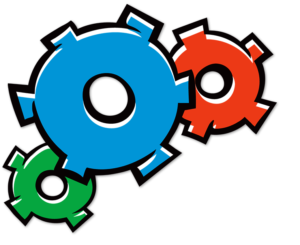GRAHAM BY ANDREW POWELL
Graham was diagnosed with hydrocephalus (water on the brain) although his first surgery revealed an arachnoid cyst (a cyst in the lining of the brain).
The first indication that something wasn’t right with my son, Graham, wasthe early onset of puberty. If it sounds like Barry White is in your living room and it turns out to be your seven-and-a-half-year-old son, you might want to look into it.
That first moment of realization starts a whirlwind of thoughts and emotions, most of which have no logic behind them, no foundation in fact, and all of which have very unhappy endings. So you head to the doctor hoping it will be easily explained.
We’ll stay optimistic, comforting, and encouraging and we’ll all get through it. But it doesn’t end there for anyone.
For Graham, it wasn’t easily explained. Our family doctor was reluctant to even speculate and referred us immediately to a specialist at the Stollery. After that first meeting, the one specialist became three: neurology, endocrinology and pediatrics. After a battery of blood tests, some lasting several hours, and aCT scan an MRI finally revealed the culprit: hydrocephalus. The only solution was surgery.
It’s maybe the most surreal experience you can have as you stand in a neurosurgeon’s office with your child while the doctor uses a pen to gesture where, in your child’s skull, he’s going to drill. I can’t say that my mind has ever managed to wrap itself around that one. I hope it never does. But this is when the “relax, everything will be fine” thoughts started, probably to mask the deeper, darker thoughts that my life, and the life of my child, just changed forever.
Graham underwent his first surgery just a few weeks after the diagnosis. The procedure is called an endoscopic third ventriculostomy (ETV) wherein the surgeon creates a channel between the third and fourth ventricles of the brain because there’s an obstruction or some other blockage in the cerebral aqueduct. The operation revealed that Graham had an arachnoid cyst in his brain. The surgeon created several drainage points in the cyst, and after a night in the hospital my wife and son were home. Graham was put on monthly injections of Lupron to help suppress the puberty, and my family breathed a sigh of relief.
When the symptoms came back nearly a year later, we knew Graham was probably headed back to surgery; we had been warned at the beginning that the ETV might not work and, given that the first surgery didn’t go exactly as planned anyway, we all braced for the worst. So 13 months after his first surgery, Graham was “under the drill” again.
This time, the procedure was far more aggressive, and they also installed an EVD (extra-ventricular drain), a temporary tube from Graham’s head to drain and monitor his brain fluid and to rebalance the pressure in his brain. There were issues related to the EVD, and Graham found himself in for a third surgery, this time to install a cerebral shunt. His second hospital stay ended up lasting five weeks, during which my wife never left his side. During these five weeks, I had to continue working. I felt guilty at first that I couldn’t be there more for my son – in addition to working, I had to look after our daughter. Really, though, I think that was the best thing I could do; I had to be at home to work anyway, so I settled into my job as single parent to our daughter and resupply staff for my wife.
Graham continues to have monthly injections of Lupron, but many of the symptoms are ongoing. At times, the effects of both the surgery and the hydrocephalus on his motor-skills and memory make him frustrated and upset. I think, maybe, this is the most important part of the process for parents: of course parents are going to be there for their kids during surgeries or hospital stays. We’ll stay optimistic, comforting, and encouraging and we’ll all get through it. But it doesn’t end there for anyone. There are always the memories of the day you realised something was wrong, or the thought that someone drilled a hole in your kid’s head, or the early morning you watched your child wheel away. And for the child, they have real, first-hand trauma to deal with, quite often with life-altering consequences. You can never be too compassionate, too understanding, or too patient. Kids can be remarkable pillars of strength, but they need to know that, however they are and however they’ve changed, you wouldn’t change a single thing – you love them and are proud of them exactly as they are.

